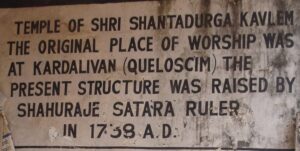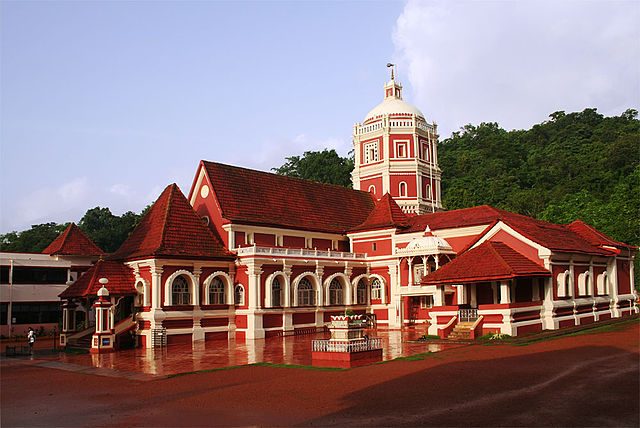This year marks the 450th anniversary of Shree Shantadurga’s idol migrating from its original location in Quelossim to Kavlem village in Ponda in 1566. The reason for the migration was the zealous religious policy that was followed under the Portuguese regime in Goa.
Many Hindu temples were razed and for this reason, idols of gods and goddesses were taken to neutral territories. Idols of Mangesh and Saptakoteswar were among those that were shifted. Ponda at the time was under the rule of Bijapur Sultanate.
A Sardessai family was the local vassal to the ruler. This meant that transition was smooth and a sense of security prevailed. It is said idols of Mangesh and Shantadurga were moved somewhere from January 14 to November 29 in 1566. Soon after that, the temples dedicated to them were demolished.
Change in fortunes

The current structure of the temple was built between 1713 to 1738 AD. While the Marathas rose as the dominant power in the neighbouring area, the temple fortunes changed. Naro Ram Mantri, a minister in the court of Maratha ruler Shahu Maharaj of Satara (Shivaji II), a descendant of Chhatrapati Shivaji, was a devotee of Shantadurga. He hailed from Vengurla.
It was under Naro Ram Mantri’s initiative that building of the current structure of the temple began. Mantri himself funded the initial efforts and even convinced Sonda king of Ponda, the vassal of the Maratha kings to donate land for the upkeep of the temple. The efforts caught the attention of Shahu Maharaj who later funded the project.
Rewarding their efforts
Even today, as a remembrance of their efforts, a traditional Palanquin (Palki) procession is initiated only in the presence of a member of the Sardessai family. Similarly, a special place is reserved for the members of Mantri’s family during the Pujas and Arti in the temple.


